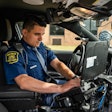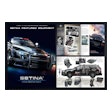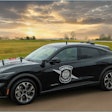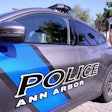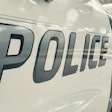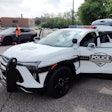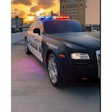A conference on the threat of Weapons of Mass Destruction in 1998 convinced Sheriff Thomas Hodgson of the Bristol County (Mass.) Sheriff's Department that his agency needed to purchase a mobile command unit so all agencies in his county would be prepared for such an event. But because this was a new issue for first responders at the time, it wasn't easy to convince municipal police and fire chiefs of the need.
"Most of them thought I was pretty nuts, to be honest," says Hodgson. The Sheriff's Department already had a converted bread truck equipped with a television and five radios, and most people thought it served their purposes well enough.
But after Hodgson conducted a unified command drill tabletop exercise involving all agencies in the area, the chiefs began to understand the need to coordinate their efforts and resources when responding to events. Bristol County applied for and received a grant from the federal government that covered half the cost of a mobile command center. A contingent from Bristol County headed out to Burlington, Wis., to meet with LDV, the company that would design and build the vehicle to Bristol County's specifications.
When 9/11 happened, it became clear to everyone that having a fully equipped mobile communications unit might be the only means of coordinating public safety operations in the event of a large-scale disaster.
"What might have seemed far off to a lot of people was, in retrospect, closer than even I imagined," says Hodgson. "Thank goodness we were ahead of the curve."
Bristol County's vehicle, which had been designed and ordered months before, arrived on Sept. 13, 2001, just two days after planes hit the World Trade Center towers in New York City.
Since that time, Bristol County has made much use of the LDV vehicle for various training and rescue operations. The resources on board have proved invaluable on numerous occasions, and upgrades over the years continue to enhance and expand the vehicle's capabilities.
"Although it was purchased under a Homeland Security grant, it's also served as a great training vehicle for non-terrorist type situations," says Hodgson. "It's been used for hostage situations; multiple training situations for fire, police, and emergency management services; homeland security drills; and also project lifesaver, where if someone wanders off and goes missing, we use the vehicle as a command post to coordinate the rescue effort."
Maj. Donald LaMarr, head of Homeland Security Special Operations with the Bristol County Sheriff's Department, can't believe the difference between the agency's original converted bread truck and the LDV mobile command center. "You can't compare it," he says. "Room, size, equipment; all in all it's remarkable. It's very high-tech and I'm sure it could get even better."
According to LaMarr, every municipal agency in the area is able to make use of the vehicle. The county maintains the vehicle and drives it to whichever department needs it; then after that department is done using it, the county picks it back up and returns it to the specially conditioned garage where it is kept out of the elements.
"I trained every agency on the vehicle when we first got it," says LaMarr. "So when the truck arrives in a town, they're not seeing it for the first time. They know that it has surveillance cameras; they know that it has computers; they know the radios and the cross-patch and so forth and how to use it all. So it's like their own vehicle. They have a sense of ownership that's shared through all the cities and towns in our county."
And not only has the vehicle served as a source of training and coordinated response to events, but it's also bridged rifts that had existed between various local agencies in Bristol County.
"I felt the mobile command center was needed by our county not only to train all first responders, but also to serve as a 'vehicle,' no pun intended, to break down the typical parochial barriers and turf battles that often happen between agencies," says Hodgson.
And it seems to have worked.
"The first responder groups—fire and police—who were at one time not working very closely with each other, now work closely with each other and with my office," says Hodgson. "That's great progress."
Bristol County plans to continue using its LDV vehicle as a resource to train and work with other departments, building on the excellent communication skills and relationships they now share.
"We're all in this thing together. We have to be today," says Hodgson. "I mean, what we're dealing with is a whole new frontier in law enforcement that we've never had to deal with before and we can't afford to be divided when trying to get the bad guy. We have to stay focused and united, and this vehicle is one tool that helps us do that."











